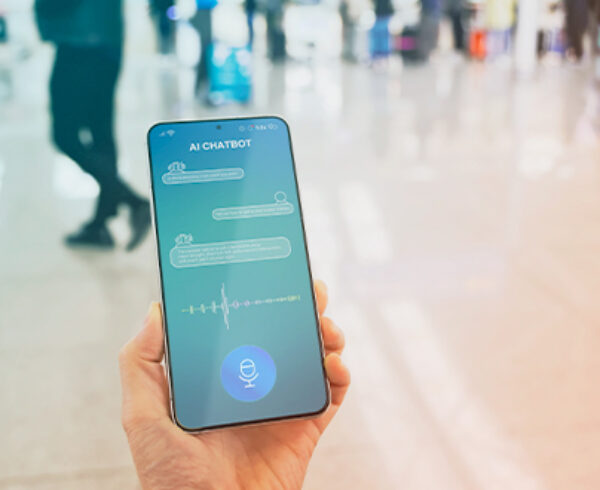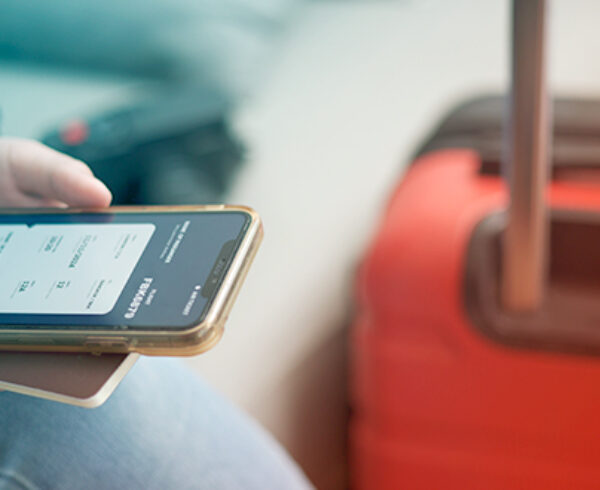As NDC grows in popularity, some Travel Managers may find themselves surrounded by new rules, new ways of booking travel, and new terms — like airline continuous pricing.
NDC definitely comes with a learning curve, plus a range of benefits and drawbacks, depending on who you ask. Airlines stand to benefit in some areas, while Travel Managers and Business Travelers stand to benefit in others. One of the elements of NDC touted as a boon for all of the above? Airline continuous pricing.
Here’s what you need to know and how it will change how your Travelers book flights in the near future.

How Does Airline Pricing Work?
Currently, AI impacts nearly every single online transaction we might make. Before that, though, airline pricing worked pretty simply. Airlines were required to file their fares in advance. They could only offer 26 separate fares for a flight. No matter when you booked or what seat you booked, you could only get one of those 26 prices for your flight.
However, NDC has changed everything with continuous pricing.
Now when an airline offers flights via an NDC channel, it’s no longer limited to the 26 price points that it was previously limited to. Instead, the airline can offer a wide range of prices. There’s basically an indefinite number of fares. There’s no need for the airline to file fares in advance, either. Instead, the airline uses AI to build a real-time fare based on data points. AI looks at all the information and data that it has on both the flight and the booking Traveler. Then, it tailors a fare that it thinks will be most attractive to the Traveler.
Dynamic vs. Continuous Pricing
Along with airline continuous pricing, you’ll also hear the term “dynamic pricing” bandied about. This term is similar but not entirely the same.
According to IATA, dynamic pricing allows an airline to offer one of those tailored prices but without the use of personalized information. Instead, dynamic pricing offers a fare based on contextual information such as supply and demand at the time of booking, when the flight takes place and other information that you might provide to the booking platform anonymously.

How are Airlines Benefiting from Airline Continuous Pricing?
Not every single airline uses the AI-powered airline continuous pricing described above, but for those who are, they’re going all in.
Lufthansa Group owns Lufthansa, Austrian Airlines, Swiss International Air Lines, Brussels Airlines, and Eurowings, among others. In a 2020 report, the group noted that it had made “considerable” investments in the technology necessary to become one of the first airline groups to use airline continuous pricing.
The senior director, head of business development, methods and solutions, and commercial officer of Lufthansa Group, Benedikt Zimmermann, is quoted as saying, “We went live with continuous pricing during the pandemic, and today we are reaping the benefits — the benefit is revenue.”
United claims that its NDC offerings — including continuous pricing — provide a wealth of benefits. Business Travel News reported that, as of the latter half of 2023, United was heavily rolling out its use of continuous pricing for premium cabins on short and long-haul flights.
The reason why airline continuous pricing benefits airlines is simple. When airlines are restricted to only 26 price points at which to sell their fares, they may find that there’s not a fare to fit every Traveler’s needs at every point in time. The more flexibility they can have to adjust a fare to fit a Traveler’s needs, based on historical data regarding that Traveler as well as contextual information regarding the desired flight and demand, the more likely the airline is to book that Traveler.
How Do Travelers Benefit from Airline Continuous Pricing?
Obviously, Travelers can benefit from airline continuous pricing by enjoying discounts that they might not otherwise be able to find. Likewise, they may be able to find fares that bundle certain amenities and services together. Otherwise, they would need to buy these a la carte.
In the Lufthansa report above, the group mentioned that its customers were able to secure the best possible prices at their time of booking via continuous pricing. It also pointed to the new ability to avoid large price jumps that would previously occur when using the old, traditional, 26-price point model.
United claims that its continuous pricing provides 40% more price points for Travelers to choose from, as compared to traditional, non-NDC channels. It also provides personalized shopping experiences based on the Traveler’s loyalty status recognition. It even provides similar or lower prices to what can be found on traditional channels.
That said, airline continuous pricing isn’t all good and no bad for Travelers, particularly business Travelers.
The Good and Bad of Continuous Pricing
As Business Travel News reported around the time that United Airlines began more prominently transitioning to airline continuous pricing, the switch can mean trouble (and higher prices) for Travel Managers and business Travelers not booking through an NDC channel. Airline continuous pricing is only available through NDC channels. As such, the lower prices that can be found via continuous pricing may not be available through non-NDC channels. However, that won’t stop a business Traveler from possibly finding those lower, continuous pricing fares outside of their company’s mandated booking tools. This can all add up to non-compliance with business travel policies.
Additionally, and unfortunately, in some instances, airlines may use the historical data they’ve compiled regarding business Travelers booking through NDC channels to their advantage — and Travelers’ disadvantage. For instance, they may adjust their pricing based on what you were willing to pay for a similar trip in the past. This means that if you were willing to splurge once, you may see comparable prices in the future that are higher than expected.

What’s Your Take on NDC?
Have you and your team of Travel Managers begun using NDC and reaping the benefits that follow? Or do you still feel like NDC comes with too much of a learning curve to be worth the benefits?
Whatever your thoughts, more and more airlines are moving their product over to NDC channels. They’re making it more financially appealing to shop via NDC channels, too. As such, it’s more likely you’ll need to make the switch sooner rather than later. When it’s time, JTB Business Travel is here to help.
Read more about what you can expect from NDC in our resource center. Then, learn more about how our Travel Management solutions could make your job easier.













